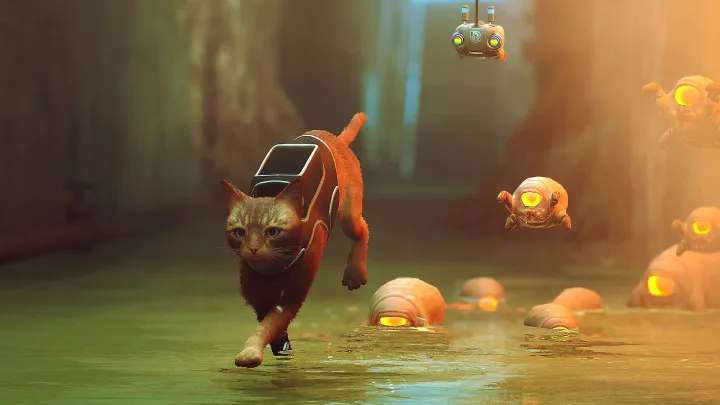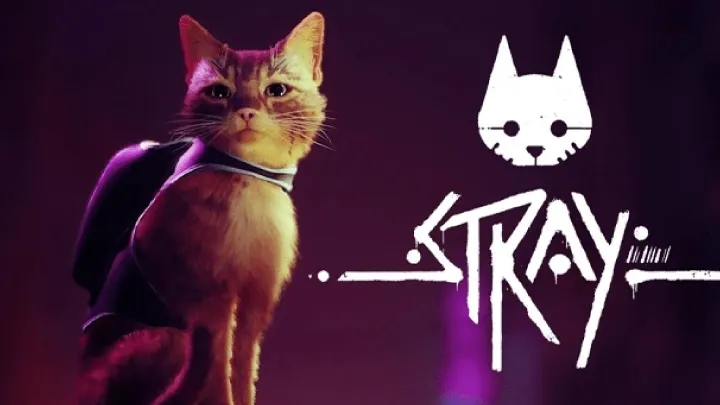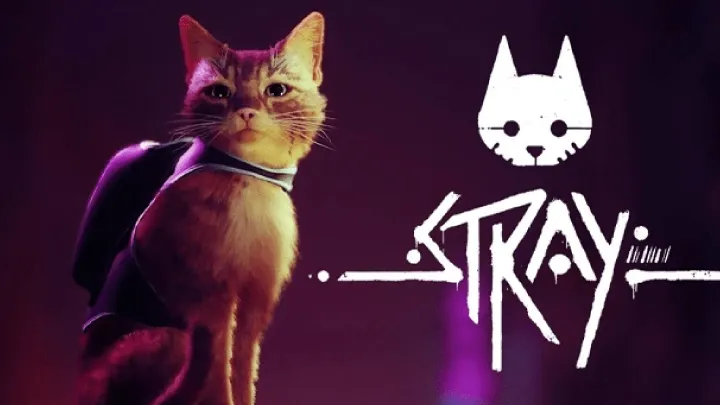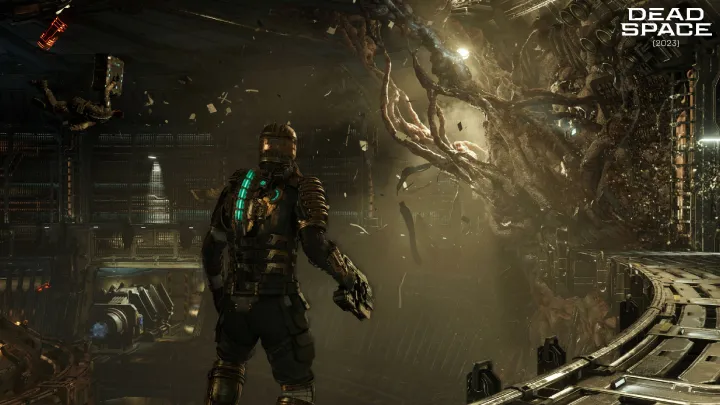Stray is an innovative adventure game that invites players to step into the paws of a stray cat navigating a vibrant, post-apocalyptic cyberpunk city. Developed by BlueTwelve Studio, this game provides a unique perspective as players guide their feline protagonist through intricate environments filled with mysteries, puzzles, and robots. With its captivating world and engaging narrative, Stray offers a delightful experience for both casual and veteran gamers. This guide provides essential tips and strategies to help players explore the city, solve puzzles, and fully enjoy the adventure of being a cat in a world dominated by technology.
Understanding the Game Mechanics
Before diving into the world of Stray, it’s essential to understand its core mechanics, which blend exploration, puzzle-solving, and narrative-driven gameplay.
Gameplay Overview
- Third-Person Perspective: Stray is played from a third-person view, allowing players to experience the world from the cat's perspective. This perspective enhances immersion and emphasizes the agile movements and behaviors of the cat.
- Movement and Interactions: Players can run, jump, climb, and meow, with a focus on fluid movement. The game encourages exploration, allowing players to discover hidden areas, interact with objects, and engage with NPCs (non-playable characters).
Exploration and Environment Interaction
- Open-World Elements: The game features a semi-open world comprised of various districts filled with secrets, collectibles, and lore. Exploring these areas is key to understanding the story and the environment.
- Environmental Hazards: Players must navigate hazards such as ledges, obstacles, and hostile enemies. Awareness of the environment is crucial for survival and progression.
Mastering Movement Techniques
Movement is a central aspect of Stray, and mastering it will enhance your exploration experience.
Jumping and Climbing
- Fluid Movement: The cat’s movement is fluid and agile. Practice jumping and climbing to traverse the environment effectively. Use the cat's natural abilities to reach higher ledges and hidden areas.
- Contextual Actions: Stray features contextual actions that trigger when players approach certain spots. Pay attention to prompts to initiate climbing or jumping, as these are key to navigating the environment.
Using the Environment
- Navigating Tight Spaces: Explore tight spaces and hidden nooks. The game rewards curiosity, and players can often find collectibles or shortcuts by investigating less obvious paths.
- Utilizing Verticality: The game encourages vertical exploration. Look for rooftops, balconies, and other elevated areas to discover hidden items or new routes.
Engaging with NPCs
Interacting with non-playable characters is essential for progressing the story and understanding the world.
Finding Companions
- Meet B12: Early in the game, players will encounter B12, a small drone that becomes the cat's companion. B12 assists with translations and puzzle-solving, making it crucial for navigating the story.
- Building Relationships: Engage with robots in the city. They provide valuable information, quests, and lore that enrich the narrative. Building relationships with NPCs can unlock new paths and items.
Completing Quests
- Side Quests: Stray features various side quests that players can complete for rewards. These quests often involve helping NPCs or finding specific items. Completing them can enhance your experience and provide useful items.
- Collecting Memories: B12 can help collect memory fragments scattered throughout the city. These memories provide insight into the world’s backstory and can reveal hidden secrets.
Solving Puzzles
Puzzles are integral to the gameplay experience in Stray. Solving them often leads to key items or story revelations.
Types of Puzzles
- Environmental Puzzles: Many puzzles require interacting with the environment, such as manipulating objects or finding hidden keys. Pay attention to your surroundings for clues on how to proceed.
- Logic Puzzles: Some puzzles involve logical thinking, requiring players to deduce how to unlock doors or access new areas. Take your time to analyze the environment and use B12’s abilities to assist.
Strategies for Solving Puzzles
- Observe Clues: Look for visual clues in the environment. Patterns, colors, and shapes can provide hints on how to solve puzzles effectively.
- Trial and Error: Don’t hesitate to experiment. Some puzzles may require multiple attempts or combinations of actions to solve. Learning from mistakes can lead to breakthroughs.
Managing Resources
Resource management is crucial in Stray, particularly when it comes to health, items, and collectibles.
Health and Healing
- Avoiding Enemies: While the game is not combat-focused, players may encounter hostile creatures. Avoiding confrontations is often the best strategy. Use stealth and agility to navigate around threats.
- Finding Resources: Scavenge for items and resources throughout the city. These can include food, items to trade, or collectibles that enhance your journey.
Collectibles and Upgrades
- Collecting Items: Throughout the game, players can find various collectibles, including music sheets, badges, and memories. Collecting these enhances the narrative and provides insights into the world.
- Using Upgrades: Some items can be used to upgrade B12 or provide new abilities. Pay attention to what you find, as these upgrades can significantly enhance your gameplay experience.
Engaging with the Story
The narrative of Stray is rich and emotionally engaging. Engaging with the story can enhance your overall experience.
Character Development
- Understanding Leon: As players progress, they learn more about Leon and his motivations. His character arc is central to the story and adds depth to the gameplay experience.
- Supporting Characters: Interact with various supporting characters. Each character adds complexity to the narrative and can provide valuable insights into the world of Stray.
Themes and Motifs
- Exploring Central Themes: Stray delves into themes of companionship, loss, and the relationship between humans and technology. Reflecting on these themes can add layers to your understanding of the narrative.
- Emotional Resonance: The game evokes a sense of nostalgia and yearning for connection. Engaging with the story can deepen your emotional investment in the characters and their journeys.
Exploring the City
The city in Stray is filled with intricate details and hidden secrets. Exploring it thoroughly is crucial for a rewarding experience.
Key Districts
- Starting District: The game begins in a dilapidated area filled with graffiti and abandoned structures. Take your time to explore this area to familiarize yourself with the controls and mechanics.
- Advanced Districts: As you progress, you’ll encounter more complex areas, such as the marketplace and the slums. Each district has unique characteristics and challenges, so explore thoroughly.
Utilizing the Map
- Understanding the Map: The in-game map is an essential tool for navigation. Familiarize yourself with its layout to track objectives and locate important areas.
- Marking Locations: Use the map to mark important locations, such as where you found collectibles or encountered tough enemies. This will help streamline your exploration.
Preparing for Major Events
As the game progresses, players will encounter significant events that require preparation and strategic planning.
Anticipating Major Story Beats
- Recognizing Patterns: As you progress, certain patterns in the narrative may emerge. Use this knowledge to anticipate upcoming challenges and prepare accordingly.
- Character Awareness: Understand the strengths and weaknesses of your allies and enemies. This knowledge will help you navigate climactic situations more effectively.
Strategic Planning
- Plan Your Abilities: As you approach major events, think about the abilities you have upgraded and how they can be used strategically. Prepare for intense encounters by equipping the right tools.
- Resource Management: Keep track of your resources leading up to major events. Ensure you have enough items and collectibles to maximize your effectiveness in key scenarios.
Replayability and Exploring Different Outcomes
Stray offers replayability, allowing players to explore different choices and outcomes in subsequent playthroughs.
Exploring Different Paths
- Multiple Endings: The game features multiple endings based on the choices you make and how you approach certain scenarios. Replaying the game allows you to explore these different narrative paths.
- Collectibles and Lore: Use New Game Plus or multiple playthroughs to collect any missed collectibles and deepen your understanding of the game’s lore.
Experimenting with Different Strategies
- Try Different Approaches: Experiment with various strategies in puzzle-solving and exploration. This can lead to fresh experiences and new ways to engage with the story.
- Explore Character Relationships: Different choices can impact character relationships. Try navigating the story with different dynamics to see how it affects the narrative.
Conclusion
Stray is a captivating adventure that invites players to explore a beautifully crafted world through the eyes of a curious cat. By following the tips and strategies outlined in this guide, players can enhance their experience, navigate the challenges of the game, and engage deeply with its rich narrative. Embrace the freedom of exploration, solve puzzles, and enjoy the heartwarming journey that awaits in Stray.



















